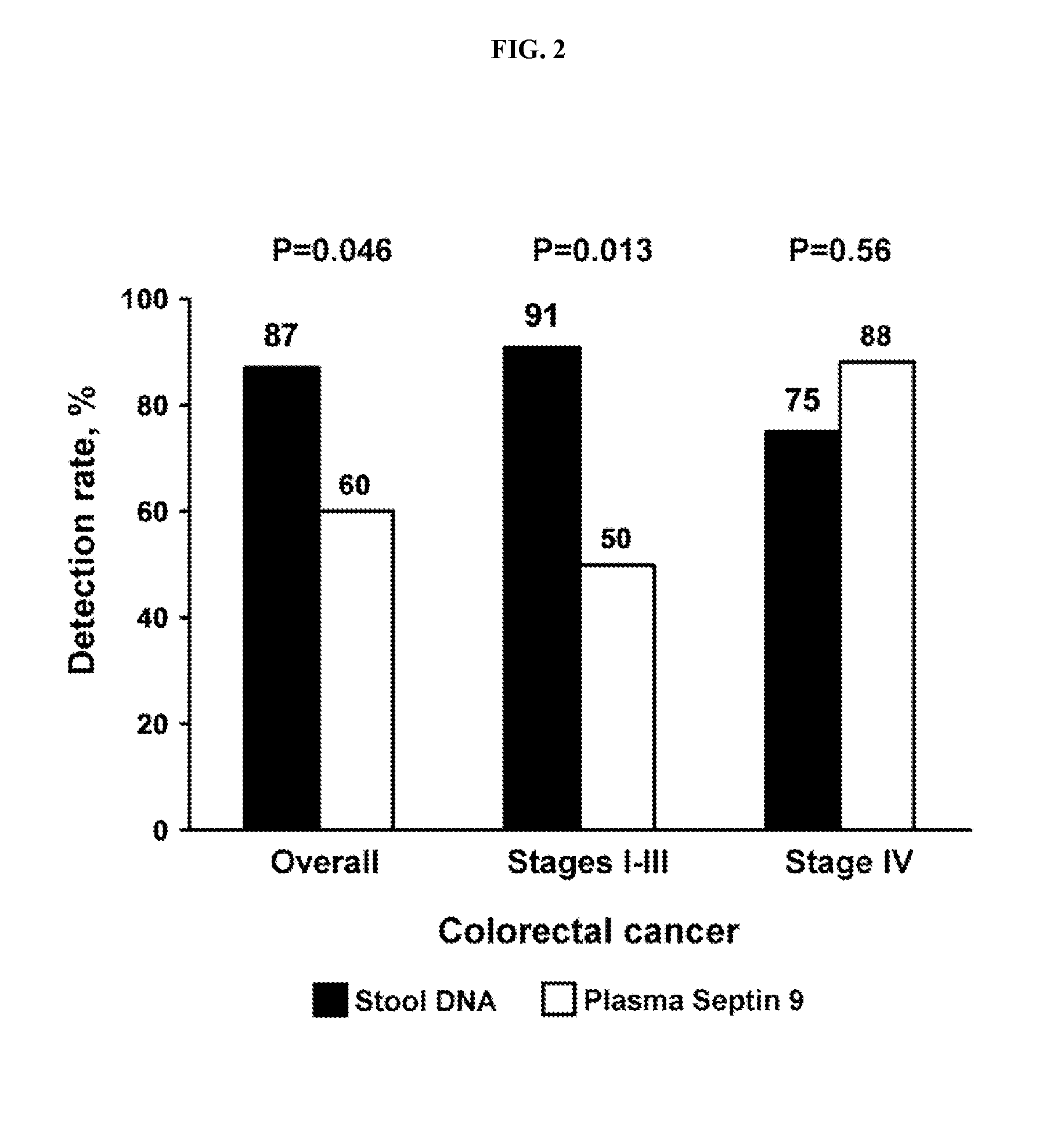Marker panel for detecting cancer
a marker panel and cancer technology, applied in the field of detecting neoplasia, can solve the problems of underdetection of proximal colon cancer by conventional approaches, inability to achieve all the desired attributes of conventional screening approaches, etc., and achieve the effect of more sensitiv
- Summary
- Abstract
- Description
- Claims
- Application Information
AI Technical Summary
Benefits of technology
Problems solved by technology
Method used
Image
Examples
experimental examples
Methods
Stool Collection and Storage
[0097]Stools were collected prior to bowel purgation and colonoscopy or more than 1 week after colonoscopy (but before neoplasm resection). Whole stools (minimum 36 grams) were collected in buckets mounted to the toilet seat. A preservative buffer was added, most often immediately after defecation; and buffered stools were archived at −80° C. However, the timing of buffer addition and pre-storage homogenization varied across participating centers.
Stool Processing and Target Gene Capture
[0098]Promptly after thawing, buffered stools were homogenized with a shaker device and centrifuged. A 12-ml aliquot of stool supernatant was then treated with polyvinylpolypyrrolidone (PVPP, Crosby & Baker, Westport Mass.) at a concentration of 50 mg / ml. Direct capture of target gene sequences by hybridization with oligonucleotide probes was performed on supernatants. Briefly, 10 ml of PVPP-treated supernatant was denatured in 2.4 M guanidine isothiocyanate (Sigma, ...
example 1
[0112]During the development of embodiments of the technology provided herein, the sDNA and SEPT9 tests were evaluated as discriminators of colorectal cancer. The sDNA and SEPT9 were first evaluated for sensitivity on cancer and adenoma samples separately. The data from paired stool and plasma samples was also merged and re-evaluated for sensitivity as a combined descriminator for colorectal neoplasia.
Patient and Lesion Characteristics
[0113]The study included a total of 147 patients (52 cases, 49 plasma controls, and 46 stool controls). Cases with paired plasma and stool samples comprised 52 patients with advanced adenoma or CRC. Among the 22 adenomas, median size was 2.0 cm (range 1.0-5.4 cm) and 55% were located at or proximal to the splenic flexure. Among the 30 CRCs, median size was 4.3 cm (0.8-8.3 cm); 50% were proximal; and 7 (23%), 7 (23%), 8 (27%), and 8 (27%) were Stage I, II, III, and IV, respectively.
Neoplasm Detection Rates of the separate sDNApanel and plasma SEPT9 test...
PUM
 Login to View More
Login to View More Abstract
Description
Claims
Application Information
 Login to View More
Login to View More - R&D
- Intellectual Property
- Life Sciences
- Materials
- Tech Scout
- Unparalleled Data Quality
- Higher Quality Content
- 60% Fewer Hallucinations
Browse by: Latest US Patents, China's latest patents, Technical Efficacy Thesaurus, Application Domain, Technology Topic, Popular Technical Reports.
© 2025 PatSnap. All rights reserved.Legal|Privacy policy|Modern Slavery Act Transparency Statement|Sitemap|About US| Contact US: help@patsnap.com



